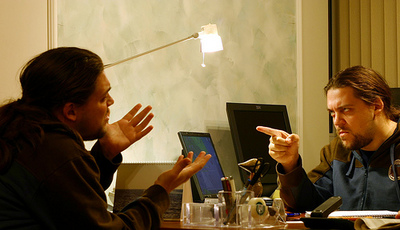As surprising as it may sound, I am not a fan of Google. It just so happens that their tools and services are very suitable for the way I work. And they cover my needs pretty good. So, most of my data is over there, on Google servers.
Now the question that I have engaged in discussing many times is “Is Google good or evil?”. I think they are neither. They are a profit-oriented company that does things the way that not many dare to try. Or have the brains to.
I do trust Google with way too much of my personal data. I understand all the privacy issues in this regard, but, frankly, I don’t care. Really.
My trust in Google’s proper conduct was not built in one day. It grew gradually from one day to another, one service at a time. I have made most of the choices consciously (or I like to think so), and I haven’t had any regrets so far. More to the opposite.
For those of you who enjoys building fantasies about what would happen if Google was truly evil or, on the contrary, saint as an angel, here is a nice list of things that Google might do. Entertaining read, and makes one think, while counting the fingers.
